Named for the blanket-stripe appearance of its ray flowers, blanketflower (
Gaillardia aristata) thrives in poor soils, dry conditions and bright sunshine. This Plains and prairie native also attracts pollinators and songbirds galore.
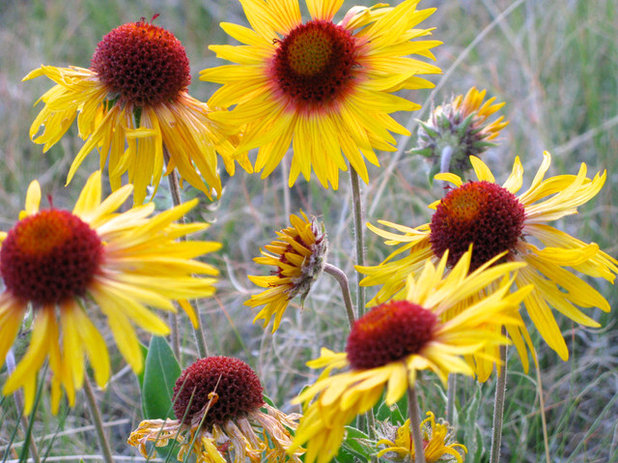
Susan J Tweit
Botanical name: Gaillardia aristataCommon names: Blanketflower, common gaillardia, Indian blanket, great blanketflower, brown-eyed Susan
Origin: Native on both sides of the Rocky Mountains, south to eastern Oregon, Utah, Colorado and Kansas; in Canada, native from British Columbia to Saskatchewan
Where it will grow: Hardy to minus 45 degrees Fahrenheit, or minus 42 degrees Celsius (USDA zones 2 to 7; find your zone)
Water requirement: Only in prolonged dry spells once established
Light requirement: Full sun
Soil requirement: Well-drained, unamended soil; susceptible to root rot in clay soils
Mature size: Up to 2½ feet tall and wide
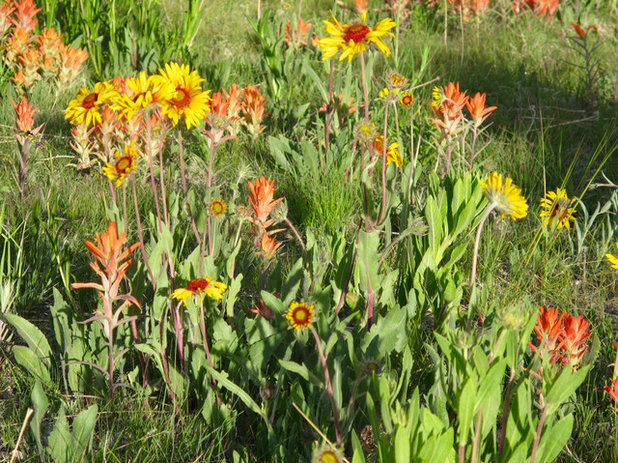
Susan J Tweit
Benefits and tolerances: Drought-tolerant; flowers and seeds that attract wildlife; deer-resistant; may be useful in fire-resistant landscaping; useful in restoring degraded lands
Seasonal interest: New bright green basal (ground-hugging) leaves in late spring; sunny yellow and maroon flowers from midsummer to frost; ornamental ball-shaped seed heads in fall (until birds eat the seeds)
When to plant: Seeds in spring; potted plants in fall or late spring
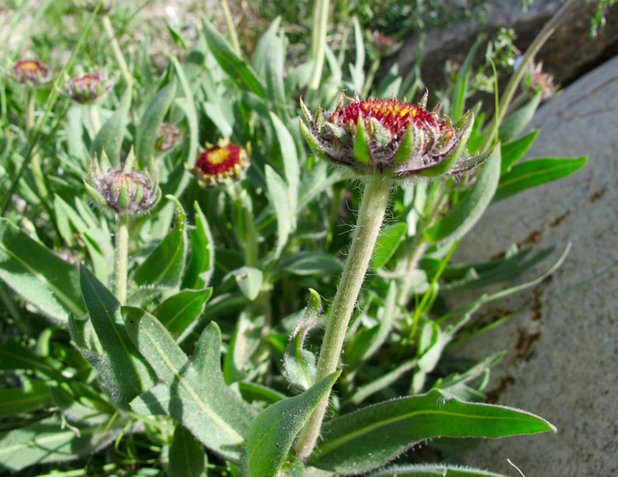
Susan J Tweit
Distinguishing traits. Yellow flower heads with their blanket pattern distinguish blanketflower from other members of the daisy or aster family. Even the buds show a maroon outer ring and a sunny gold middle.
Its flowers attract butterflies (including fritillaries and skippers), moths, native bees and beetles, and the bristly seeds are important fall food for small seed-eating birds, including goldfinches and siskins. The flowers provide crucial summer food for sage-grouse and sharp-tailed grouse chicks, and are grazed by bighorn sheep.
Before the plant blooms, blanketflower stands out with an overall sparkly or fuzzy appearance of the stems and foliage from an abundance of short, bristly hairs. The lance-shaped leaves are long, with a prominent central vein and sometimes roughly toothed edges, and they alternate on the stem. After the petals have dropped from the flowers, the central disk forms a ball-shaped seed head that is also bristly. Each seed has papery bracts below it and is covered with silvery hairs. The plants grow from a central taproot that can reach 2 feet deep.
Gaillardia, the scientific name, honors Gaillard de Marentonneau, a French patron of botany in the 18th century.
Aristata, meaning “full of bristles,” comes from the Latin word for bristle,
arist, for the hairs that cover the plant. Some people get an allergic rash from those bristly hairs.
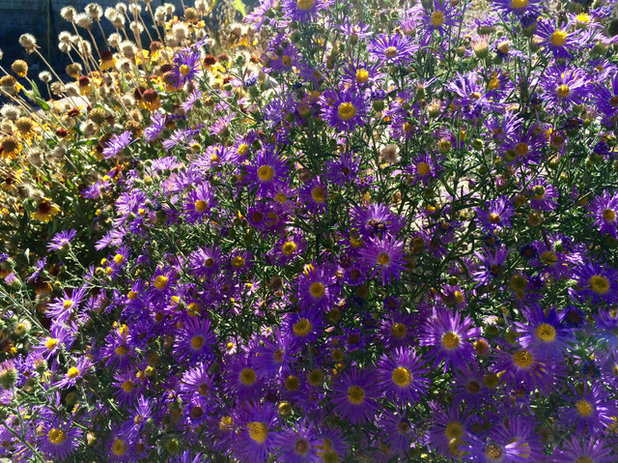
Susan J Tweit
How to use it. Blanketflower shines in xeric gardens and parking strips, whether planted en masse as a midborder component in formal beds, or as an informal component of meadow or prairie-style plantings. It pairs beautifully with purple asters and tansy asters, as shown here, as well as with blue beardtongues, such as Rocky Mountain penstemon (
Penstemon strictus), and midsize ornamental grasses, especially little bluestem (
Schizachyrium scoparium) and switchgrass (
Panicum virgatum).
Blanketflower is a moderately long-lived perennial with a very long blooming time — from midsummer until frost. It is especially valuable in meadow or prairie-style gardens and in restoring degraded grasslands because it reseeds readily and tolerates extremely cold winters, poor soils, limestone and lengthy droughts. Blanketflower is also resistant to the toxic chemicals exuded by spotted and Russian knapweed, two aggressive non-native rangeland weeds.
Planting notes. Seeds germinate best if planted in spring and kept moist. Leave dried seed heads on the plants in fall until birds eat the seeds, then cut back to just above the basal leaves.
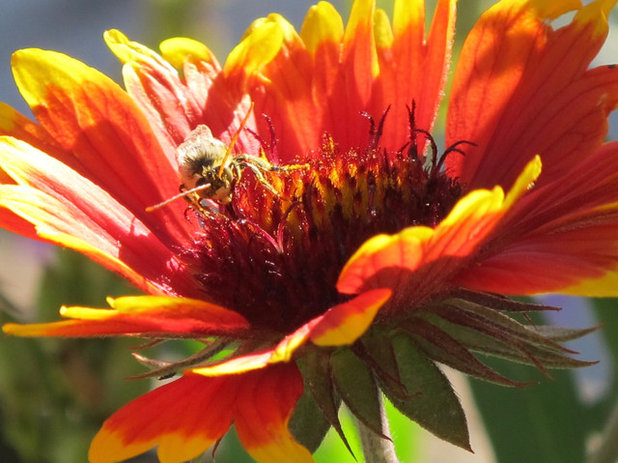
Susan J Tweit
Recommended varieties. The Southwest and southern Plains native called
Indian blanket (
G. pulchella), or firewheel, is a better choice for these areas. The wide red stripe on its ray flowers is quite showy, and the plant is more heat-tolerant than blanketflower.
Several dozen horticultural varieties of blanketflower and related species have been bred specifically for gardens, particularly for the richer soils and wetter climates of the Southeast and Middle Atlantic states. These include
‘Goblin’, a shorter variety;
‘Fanfare Blaze’, with all-red ray flowers; and
‘Mesa Peach’, with pastel ray flowers. Note that varieties with extensively modified flowers, like ‘Fanfare Blaze’ and ‘Mesa Peach’, may not be as attractive to pollinators and songbirds; selecting for color and petal shape can result in decreased pollen and seed production.
Browse more native plants by region
See more native plants that will attract bees and hummingbirds this summer





